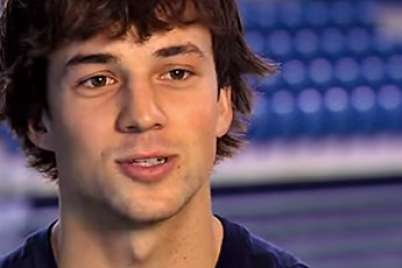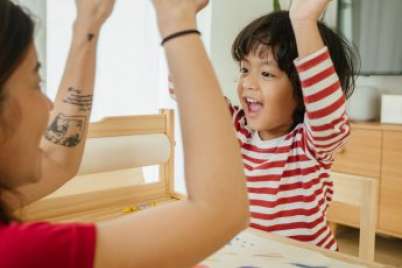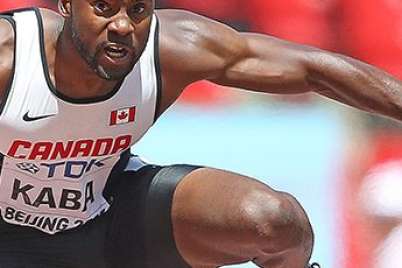
Jennifer Heil on life as a mom, self-care, and raising active kids
Jennifer Heil is an Olympic medalist, World Champion, and World Cup champion in freestyle ski moguls. She is also a mother of two and an Active for Life Role Model. Jennifer is the co-founder of B2ten, an organization making a significant contribution to Olympic sport in Canada. Jennifer also contributes to sport in British Columbia, as a board member of viaSport. Acting as a community service activist, Jennifer is an ambassador for the Canada Games Activity Challenge, and the Because I am a Girl initiative.
Since we last caught up with Jenn in January 2012, she has retired from competing in Olympic sport.
AfL: Which of your experiences in sport prepared you for the unique challenges of becoming a parent?
All of them! Sport has shaped me into the person I am today and how I parent. I have learned so many important lessons from sport but the three traits I rely on every day as a parent are the importance of resilience, healthy habits, and play.
AfL: How have resilience, healthy habits, and play become part of the way you parent?
Resilience in the face of doubt, defeat, and exhaustion was critical in helping me stay the course and chase my dreams on the ski slopes. It allowed me to have the confidence to continuously take the risks I needed to take in order to achieve my best. As a parent, I try to face each day with optimism and embrace the challenge of raising young children in today’s connected, fast-paced world. Not only do I constantly draw on this trait, but I also work hard to instill this attitude in my boys.
In my sport, my moment to win an Olympic medal occurred in less than 30 seconds, and happened only once every four years. But those moments were built on years of consistently doing the little things well. Over the years I built healthy habits for my mind and body. These positive habits included taking care of myself by getting enough rest, eating well, building optimism and resilience, and working to put my best effort forward each day. It isn’t possible to get a perfect score on healthy habits as a parent. But I know that making the effort to take care of myself the best I can is important. I am prioritizing things like eating healthy foods even when I’m on the run, staying physically active, and taking ten minutes a day to meditate.
When I look back at my best performances as an athlete there was always one thing present – the feeling of joy. But racing can also be very stressful and difficult. Feeling joy didn’t necessarily mean I was always having fun. Rather, the feeling of joy was present when I had an appreciation for the opportunity and an openness to fully give in to the instant. As an athlete, I used a key word to access this mindset on demand, but as a mother, I don’t need one. I just have to look at my children because kids naturally approach life with this attitude. My children are my constant reminder to let go of my distractions and to get lost in the joy of the moment with them.
AfL: What is your best advice to new moms in regards to staying active after the baby arrives?
After I had my first child my biggest hurdles were fatigue and a lack of time. As someone who loves to push my physical limits, my best advice would be to take it slow. Going for daily walks with my baby was the best thing I did in the early days. I would suggest building up to higher intensity workouts when your body feels ready.
But for some women, it isn’t that simple. I know it wasn’t for me after having my second child. I had a very extreme diastasis recti (abdominal wall separation) and it was difficult just to lift my newborn and to support myself while sitting in a chair. Eventually, I underwent surgery because rehabilitation and therapy were not enough. I now realize that many women need additional support to regain physical activity levels. In Europe, specialized physical therapy takes place right after having children but in Canada, it is not a part of our culture. I would encourage women to seek out therapists that specialize in women’s health to help with the transition back to physical activity if required.
AfL: As someone who understands the importance of physical literacy, can you share with other parents a few of the things you’re doing to make sure your children develop skills, have fun, and love being active?
It can all sound pretty intimidating, especially for parents who don’t consider themselves “sporty.” But creating opportunities for children to learn new skills is easy and can be incorporated into time at home, in the backyard, or walking to school.
My approach with my kids is to keep it fun and provide as many opportunities as possible for them to explore and express themselves through movement. I never think about it in terms of fitness but rather I make it about play.
For example, I create opportunities to work on my toddlers’ movement skills by letting them hang off the stair railing while I hold their hand, and encouraging them to kick and splash in the bathtub. I drive my eldest half way to school and let him walk the last four blocks. And last but not least, my personal favourite — the family dance party, where I subtly introduce concepts like jumping on one foot or doing the crab walk to the beat.
AfL: What is your go-to self-care routine?
That’s a great question because I find it easy to forget about taking care of myself, now that I am a parent. I try to dedicate four days a week to physical activity, even if it is just for thirty minutes. My motivation is that I know I feel better, deal with stress more effectively, and that I am happier when I am physically active.
I also set aside ten minutes a day to meditate.
AfL: What did your parents do to help you become physically literate? Are there any traditions you are going to continue with your own kids?
No one was speaking about physical literacy when I was a child. But I was fortunate to grow up in a household that valued physical activity, sports, and outdoor play. From a young age, I discovered the freedom of movement and the joy of challenging myself through sport. I wasn’t aware of it at the time but my numerous opportunities to play with my family outdoors and participate in community sports when I was younger built a strong foundation that helped me become an Olympian later in life.
I have so many great memories of being on the mountain with my family that I hope to instill that love for skiing and the outdoors in my boys.
AfL: How do parents reconcile technology and screen time with getting kids to be physically active?
I think families need to build routines and create habits around screen time. In doing so, I have found that it reduces the amount of negotiation around using technology versus being engaged in other activities, including active play.





